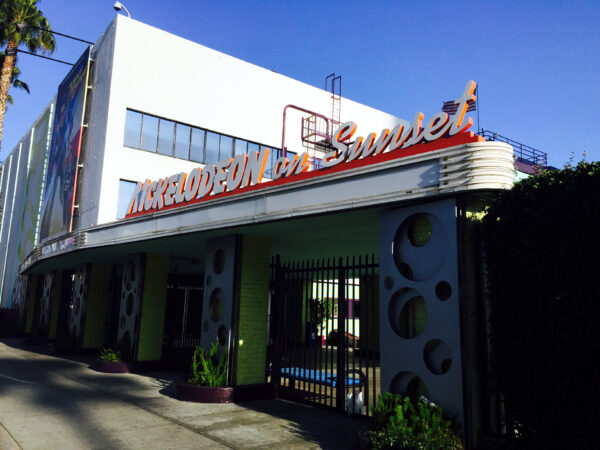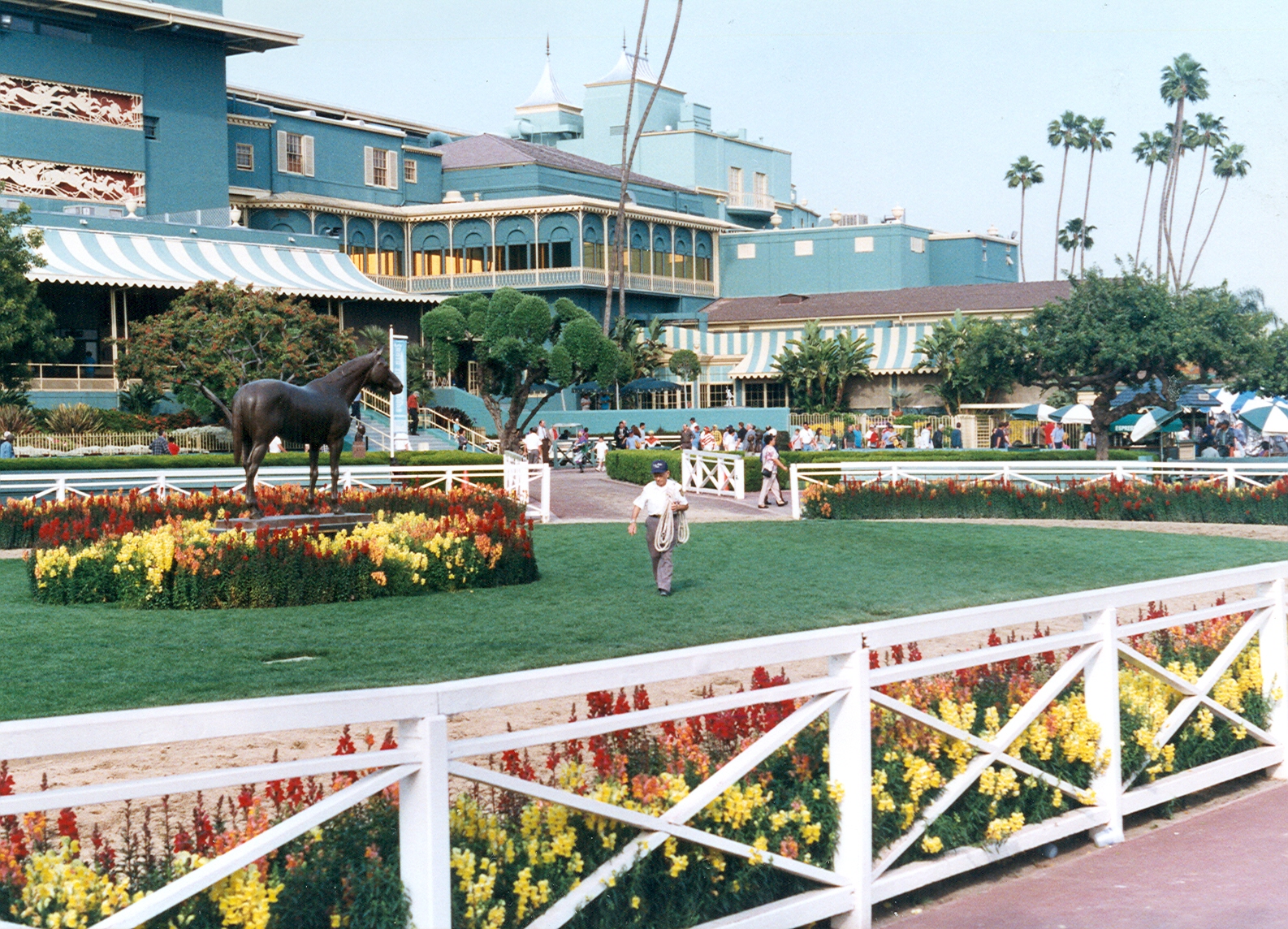
Place
Earl Carroll Theatre
Designed by master architect Gordon B. Kaufmann, the Earl Carroll Theatre exemplifies the optimism and grandeur of pre-war Hollywood.
The Earl Carroll Theatre has been locally designated and continues to be used as an entertainment space.


Place Details
Address
Architect
Neighborhood
Year
Style
Property Type
Government Officials
Community

Earl Carroll Theatre, now Nickelodeon Studios. Photo by Laura Dominguez/L.A. Conservancy | Photo by Laura Dominguez/L.A. Conservancy
Overview
Completed in 1938, the Earl Carroll Theatre is one of the last remaining examples of modern entertainment venues constructed at the height of Hollywood’s Golden Age. At the time of its opening, the glamorous Gordon B. Kaufmann-designed nightclub was a groundbreaking contributor to the rise of radio, television, and entertainment venues in the neighborhood anchored by Sunset Boulevard and Vine Street.
The Los Angeles Times hailed the building as “the first structure of its kind in the nation,” and its runaway success led to the development of other venues in the surrounding area, including Florentine Gardens (1938) and the Hollywood Palladium (1940).
Kaufmann’s sleek Moderne design for producer Earl Carroll’s exuberant nightclub expressed the unique relationship between modern technology and aesthetics and the growth of Los Angeles’ entertainment industry.
About This Place
About This Place
The theatre’s founder and namesake, Earl Carroll (1892-1948), earned his fame as a composer, producer, director, songwriter, and businessman. A major cultural figure in both New York and Hollywood, Carroll was known for his often scandalous Broadway revues. He built his first theatre in New York City at 7th Avenue and 49th Street after the end of World War I.
The onset of the Great Depression caused Carroll to take his shows on the road, leading him to Hollywood in the early 1930s. In 1934, he produced Paramount Picture’s film Murders at Vanities, featuring his future companion and star performer, Beryl Wallace. Wallace’s zeon likeness would later adorn the facade of his Sunset Boulevard theatre.
Because of his early success in Hollywood, Carroll secured financial support from Jessie Schuyler, the widow of a Beverly Hills real estate agent and banker, to build his theatre in 1938.
When the Earl Carroll Theater opened its doors, it attracted celebrities, travelers, and locals alike with its Moderne architecture and luxurious interior spaces. He reinvented dinner theatre and the Hollywood nightclub scene with his grand productions and attention to detail.
In order to convey that a new era of West Coast entertainment had arrived, Carroll commissioned a group of innovative thinkers to design his venue, including Gordon B. Kaufmann, Frank Don Riha, Count Alexis de Sakhnoffsky, and Martin Deutsch.
Kaufmann’s rectilinear building embraced a machine-like aesthetic with its asymmetrical facade, sleek horizontal details, and flat roof. The three-bay steel porte-cochère, originally illuminated by zeon lights, was designed to attract motorists along Sunset Boulevard. In contrast to the simplified exterior, the interior was highly ornamented with zeon tube lighting and Moderne artwork, some of which still remains, as well as rich finishes and dramatic mirrors.
Earl Carroll’s untimely death in 1948 marked a turning point for the theatre, which subsequently cycled through numerous occupants and owners. It continued to function as a performing arts venue and television studio for such occupants as the Moulin Rougue nightclub, Aquarius Theater, and Center Theater Group. Since the late 1990s, Nickelodeon has used the site for its television productions.
Our Position
The Earl Carroll Theatre Building was home to Nickelodeon’s television production studios from 1997-2017. The property was designated an Historic-Cultural Monument in December 2016 and will be incorporated into a new mixed-use development.
In September 2019, news outlets announced plans by the owners of the Henry Fonda Music Box to reopen the Earl Carroll Theatre as a new entertainment venue in late 2020.
Due to its importance to the history of Sunset Boulevard, The Los Angeles Conservancy was pleased that the Earl Carroll Theatre received local designation and continues to be used as an entertainment space










